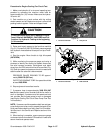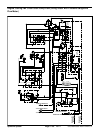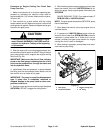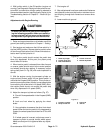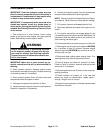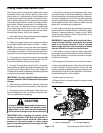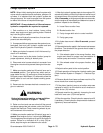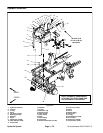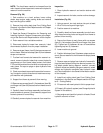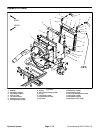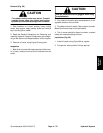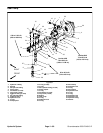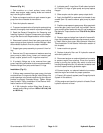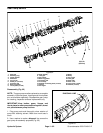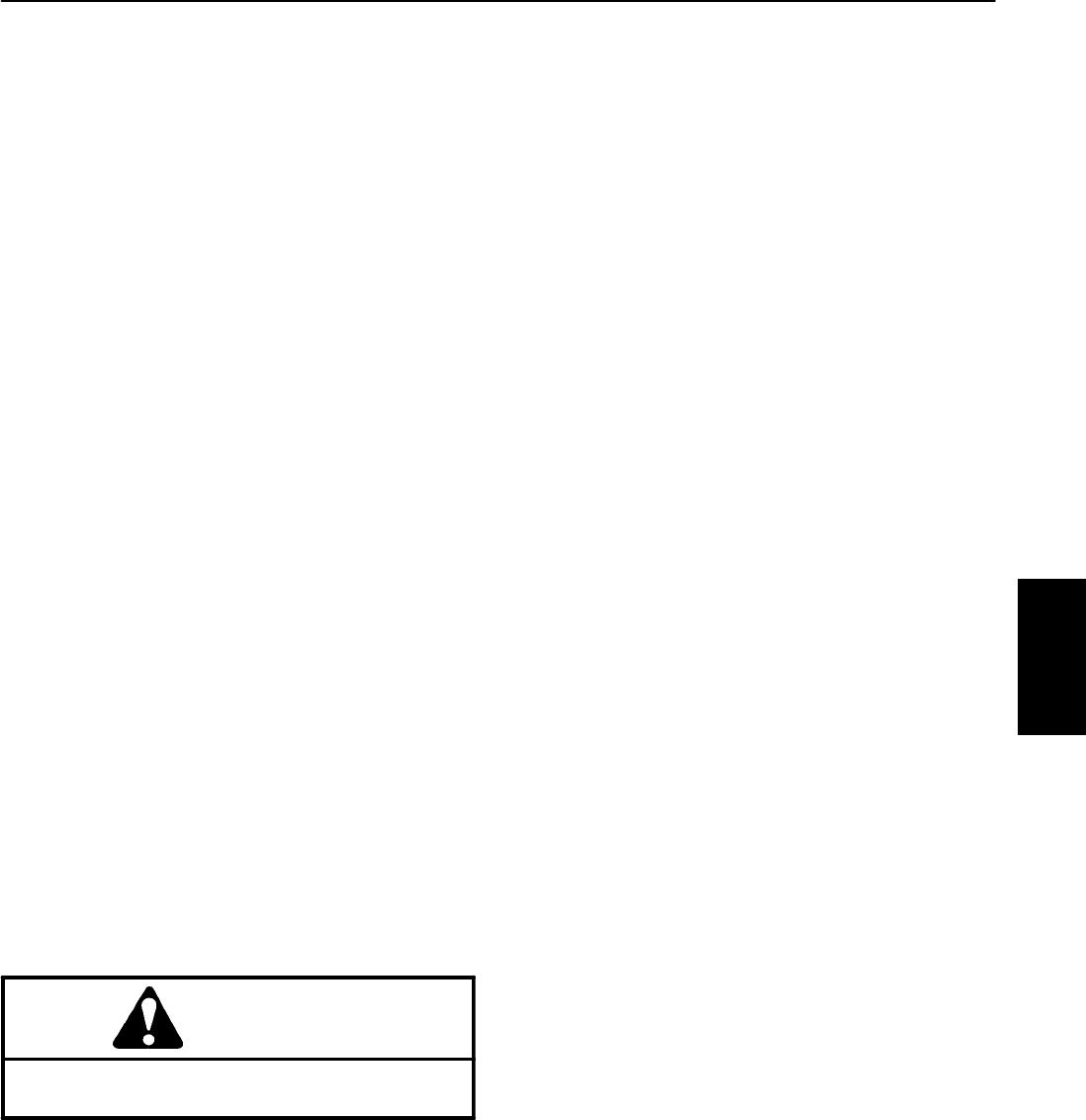
Groundsmaster 4000--D/4010--D Hydraulic SystemPage 4 -- 75
Charge Hydraulic System
NOTE: When initially starting the hydraulic system with
new or rebuilt components such as motors,pumps or lift
cylinders, it is important that the hydraulic system be
charged properly. Air must be purged from the system
to reduce the chance of component damage.
IMPORTANT: Change hydraulic oil filters whenever
hydraulic components are repaired or replaced.
1. Park machine on a level surface. Lower cutting
decks, stop engine and apply parking brake. Remove
key from the ignition switch.
2. Make sure all hydraulic connections, lines and com-
ponents are secured tightly.
3. Ifcomponentfailure was severe or the system is con-
taminated, flush and refill hydraulic system and tank
(see Flush Hydraulic System in this section).
4. Make sure hydraulic reservoir is full. Add correct hy-
draulic oil if necessary.
5. Check c ontrol rod to the piston (traction) pump for
proper adjustment, binding or broken parts.
6. Disconnect wire harness electrical connector from
the engine run solenoid to prevent the engine from star-
ting.
7. Make sure traction pedal and lift control lever are in
the neutral position. Turn ignition key s witch and en-
gage starter for ten (10) seconds to prime the traction
and gear pumps. Wait fifteen (15) seconds to allow the
starter motor to cool and then repeat cranking proce-
dure again.
8. Reconnect wire harness electrical connector to en-
gine run solenoid.
WARNING
Before jacking up the machine, review and f ollow
Jacking Instructions in Chapter 1 -- Safety.
9. Raise one front and one rear wheel off the ground
and place appropriate jack stands under the frame to
support the machine. Chock remaining wheels to pre-
vent movement of the machine.
10.Make sure traction pedal and lift control lever are in
neutral. Start engine and run it at low idle (1450 rpm).
The charge pump should pick up oil and fill the hydraulic
system. If there is no indication of fill in thirty (30) se-
conds, stop the engine and determine the cause.
11.After the hydraulic system starts to show signs of fill,
actuate a liftswitch until the liftcylinder rodmoves in and
out several times. If the cylinder rod does not move after
10 to15 seconds, or the pump emits abnormal sounds,
shut the engine off immediately and determine cause or
problem. Inspect for the following:
A. Loose filter or suction lines.
B. Blocked suction line.
C. Faulty charge relief valve in control manifold.
D. Faulty gear pump.
12.If cylinder does move in 10 to 15 seconds, proceed
to step 13.
13.Operate the traction pedal in theforward and reverse
directions. The wheels off the ground should rotate in
the proper direction.
A. If the wheels rotate in the wrong direction, stop
engine and check for proper hose c onnections at
traction pump and motors. Correct as needed.
B. If the wheels rotate in the proper direction, stop
engine.
14.Adjust traction pedal to the neutral position.
15.Check operation of the traction interlock switch (see
Check Interlock System in Chapter 5 -- Electrical Sys-
tem).
16.Remove blocks from frame and lower machine. Re-
move chocks from remaining wheels.
17.If the piston (traction) pump or a traction motor was
replaced or rebuilt, run the machine so all wheels turn
slowly for ten (10) minutes.
18.Operate machine by gradually increasing its work
load to full over a ten (10) minute period.
19.Stop the machine. Check hydraulic reservoir and fill
if necessary.Check hydraulic components for leaks and
tighten any loose connections.
Hydraulic
System



